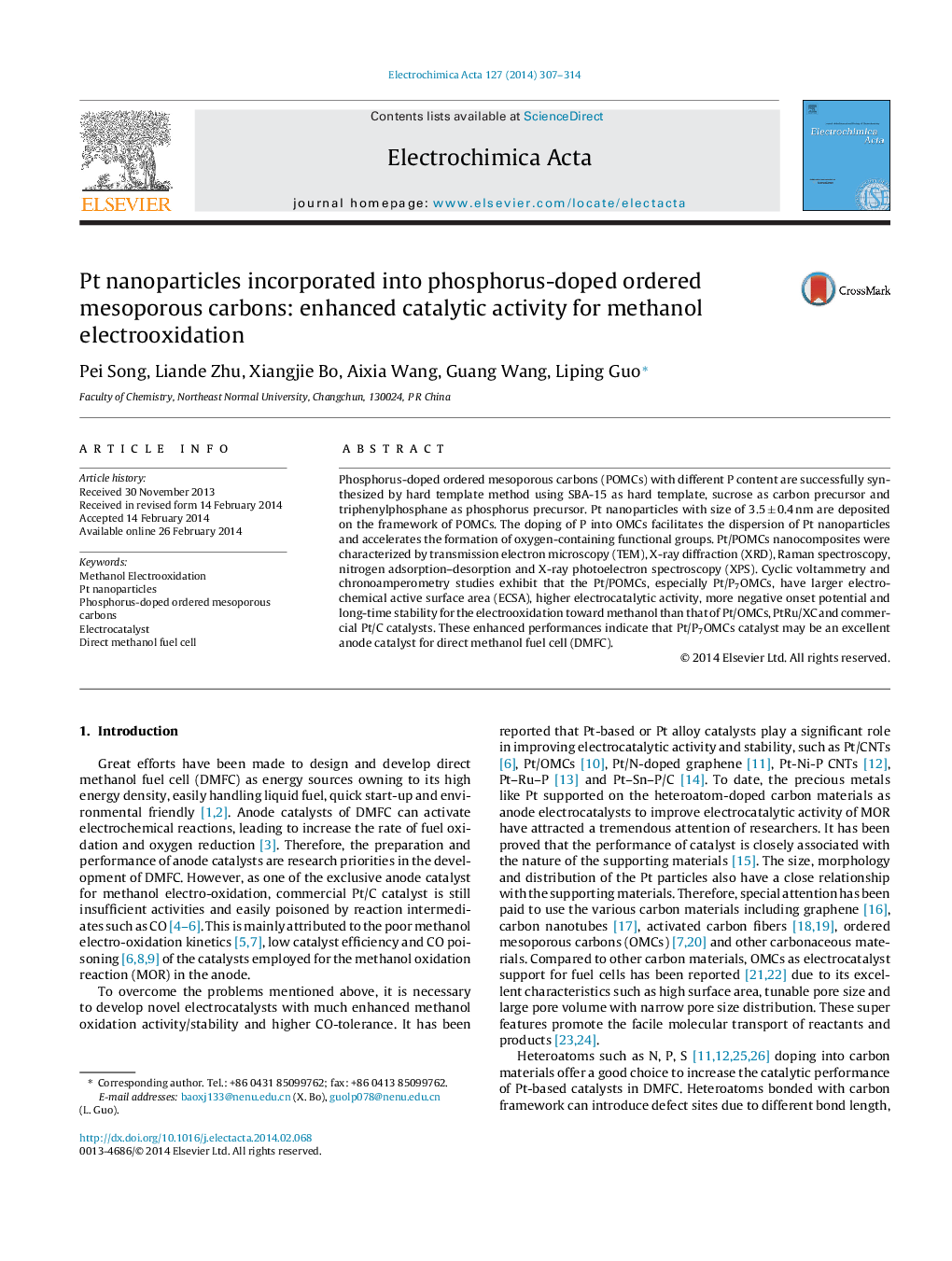| Article ID | Journal | Published Year | Pages | File Type |
|---|---|---|---|---|
| 186164 | Electrochimica Acta | 2014 | 8 Pages |
•P-doped ordered mesoporous carbons (POMCs) as support for Pt nanoparticles.•The addition of P promote the formation of oxygen-containing functional groups.•The P-doped OMCs demonstrate excellent CO-tolerance towards MOR.•Pt/P7OMCs shows much enhanced electrochemical activity and long-term stability.
Phosphorus-doped ordered mesoporous carbons (POMCs) with different P content are successfully synthesized by hard template method using SBA-15 as hard template, sucrose as carbon precursor and triphenylphosphane as phosphorus precursor. Pt nanoparticles with size of 3.5 ± 0.4 nm are deposited on the framework of POMCs. The doping of P into OMCs facilitates the dispersion of Pt nanoparticles and accelerates the formation of oxygen-containing functional groups. Pt/POMCs nanocomposites were characterized by transmission electron microscopy (TEM), X-ray diffraction (XRD), Raman spectroscopy, nitrogen adsorption–desorption and X-ray photoelectron spectroscopy (XPS). Cyclic voltammetry and chronoamperometry studies exhibit that the Pt/POMCs, especially Pt/P7OMCs, have larger electrochemical active surface area (ECSA), higher electrocatalytic activity, more negative onset potential and long-time stability for the electrooxidation toward methanol than that of Pt/OMCs, PtRu/XC and commercial Pt/C catalysts. These enhanced performances indicate that Pt/P7OMCs catalyst may be an excellent anode catalyst for direct methanol fuel cell (DMFC).
Graphical abstractPt nanoparticles are supported on the phosphorus-doped ordered mesoporous carbons (Pt/POMCs), which show much improved electrocatalytic activity, CO-tolerance and long-term stability toward methanol oxidation.Figure optionsDownload full-size imageDownload as PowerPoint slide
